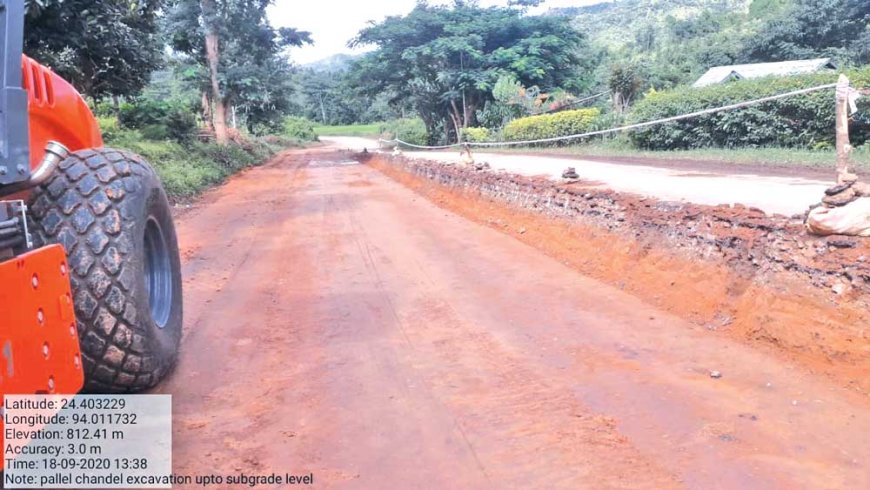Transforming India’s infrastructure: Impact of rapid road & highway construction

There have been notable advancements in infrastructure development as India moves closer to realising its aspirational aim of being a US$5 trillion economy. Roads and highways development have expanded substantially throughout this transition, which has been primarily driven by market-oriented reforms and liberalised economic policies. This has changed the infrastructural landscape of the country and stimulated economic growth.
Over the past nine years, India has witnessed a remarkable surge in its highway network, with the addition of expressways and an expansion of the National Highways Network by a staggering 60%, in 2022-23 totalling 1,45,240 kilometres as per Ministry of Road Transport & Highways. Simultaneously, Indian Railways has bolstered its capacity, introducing new trains like Vande Bharat, Amrit Bharat, and Namo Bharat, while significantly accelerating the pace of railway track construction.
 Leading the way in this spectacular growth is the infrastructure industry, which has become a vital force behind economic growth. The Union Government's allocation of 3.3% of GDP towards infrastructure in FY24-25 underscores its commitment to nurture robust infrastructure development as a catalyst for economic progress. With ambitious targets set by the government, including the construction of a 2 lakh kilometers national highway network by 2025 and the expansion of the total number of airports from 140 to 220 by the same year, India is poised to witness a monumental transformation in its transportation infrastructure. Additionally, plans to operationalize 23 waterways by 2030 and develop 35 Multi-Modal Logistics Parks (MMLPs) by 2030 further exemplify the comprehensive approach towards infrastructure enhancement.
Leading the way in this spectacular growth is the infrastructure industry, which has become a vital force behind economic growth. The Union Government's allocation of 3.3% of GDP towards infrastructure in FY24-25 underscores its commitment to nurture robust infrastructure development as a catalyst for economic progress. With ambitious targets set by the government, including the construction of a 2 lakh kilometers national highway network by 2025 and the expansion of the total number of airports from 140 to 220 by the same year, India is poised to witness a monumental transformation in its transportation infrastructure. Additionally, plans to operationalize 23 waterways by 2030 and develop 35 Multi-Modal Logistics Parks (MMLPs) by 2030 further exemplify the comprehensive approach towards infrastructure enhancement.
The transport sector, in particular, stands out as a focal point for investment and growth. The India Investment Grid (IIG) database reflects this momentum, with around Rs 69 lakh crore worth of projects currently in various stages of development, prominently featuring roads and highways, railways, and urban public transport.
A significant portion of infrastructure projects is being undertaken through Public-Private Partnership (PPP) models, with private sector participation playing a vital role in initiatives like Build-Operate-Transfer (BOT) and Hybrid Annuity Mode (HAM). The National Monetization Pipeline (NMP) highlights the government's efforts to leverage private investment, with roads and highways accounting for a substantial share of monetization plans.
The introduction of the PM Gati Shakti initiative, with three infrastructure projects worth Rs 9600 crore recommended for approval in the 2024 interim budget, further demonstrates the government's commitment of enhancing logistics efficiencies and reducing transportation costs. By streamlining high-traffic corridors, these projects promise improved operational efficiency for passenger trains, enhanced safety measures, and faster travel speeds.
Moreover, infrastructure and construction investments, such as those allocated to the Pradhan Mantri Awas Yojana (PMAY), is stimulating growth across various sectors, impacting linked building materials, components, and machinery industries. With the construction sector continues contribution in the economy, investments in infrastructure is not only driving economic growth but also encouraging inclusive development by creating employment opportunities and driving demand across multiple sectors.
India’s rapid construction of roads and highways is fundamentally reshaping its infrastructure landscape, fuelling economic growth, and generating employment opportunities. As the nation continues its journey towards economic prosperity, sustained investment in infrastructure will remain pivotal in unlocking its full potential and fostering inclusive development across the country.
 |
Pranay Kumar Executive Director, REPL (Rudrabhishek Enterprise Limited) |







